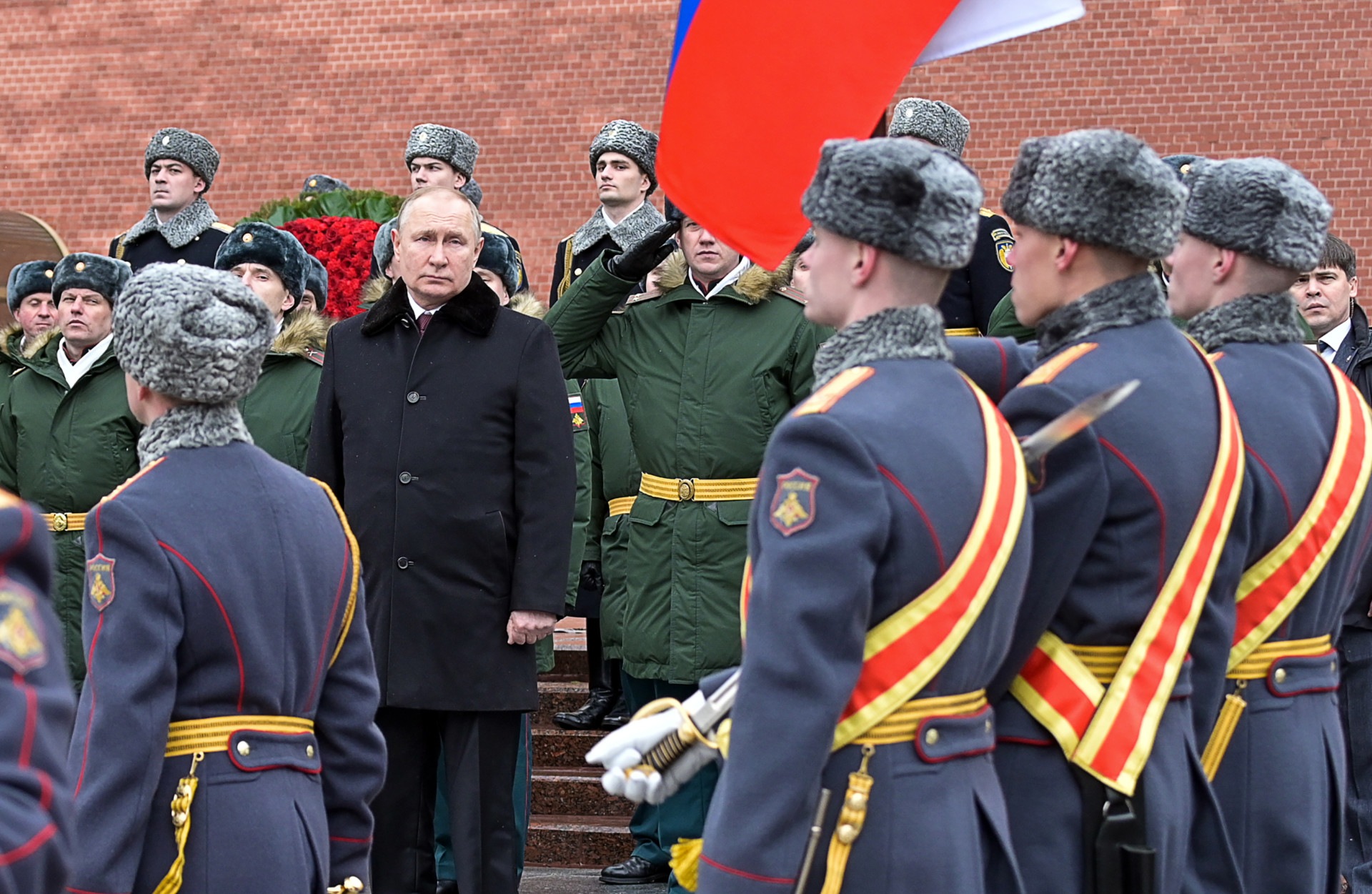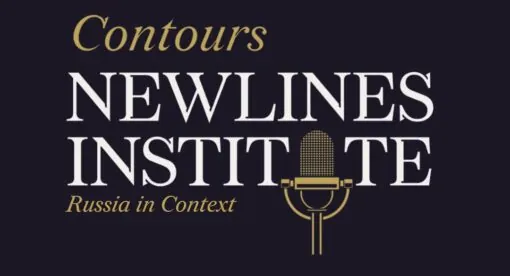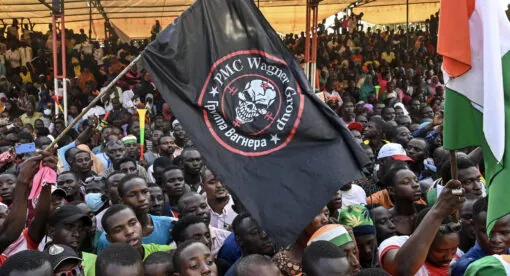The Russian military invasion of Ukraine, with the stated intent of forcing Ukraine to move away from its NATO and EU membership aspirations and to recognize Russia’s claim to Crimea, has shown the Russian armed forces’ severe limitations. These shortcomings present an opportunity for Ukraine and its allies to cause a shift in Russia’s style of aggressive foreign policy behavior and its detrimental effects on the European security environment. Over a decade of efforts to adjust Russia’s intent and to get it to follow the rules set out in the international community through negotiations and sanctions has proven ineffective. However, in Ukraine, Russia is exposing a weakness that could erode the role of Russia’s military as a pillar of its foreign policy.
The impact of the Russian invasion of Ukraine extends far beyond the security and sovereignty of Ukraine itself. While clearly the global response to the invasion is having major effects on the global economy, even at the pure military level the battle for Ukraine has effectively become an inflection point in the global balance of power. The outcome of the war in Ukraine will define hard-power relations at the international strategic level for decades to come, and the proportion of its future impact must be well understood to inform policy choices in the short term.
Limits to Russia’s Military Capacity
To comprehend this impact, it is critical to understand the scale of Russia’s military operation in Ukraine in comparison to the entire capacity of the Russian armed forces. The scale of ground assets simultaneously committed to this invasion is unprecedented and surpasses in raw numbers the Soviet invasion of Afghanistan from 1979 to 1989 and both Chechen wars during the 1990s. In relative terms, the scale of the Ukraine invasion is even greater, considering the reduction in size that Russia’s armed forces have experienced since these prior conflicts. At this point, this author assesses that Russian ground maneuver elements and support fires – the infantry and armor units that do the fighting, as well as the artillery units that support them – deployed into Ukraine represent somewhere between a quarter and a third of the full ground warfare capacity of Russia’s standing army (discounting reserve units).

This means that, in realistic terms, Russia is approaching a maximum sustainable level of commitment of its active ground forces. In addition to operations in the Ukraine theater, Russia also has a requirement to maintain military capacity for security along its other border areas and to guarantee domestic security in the event of rampant protests. Despite its desire to achieve a victory in Ukraine, Moscow still needs to protect its borders with Finland and the Baltic States, where it could fear potential conflict with NATO. Russia also has a requirement to retain an ability to intervene or defend in the Caucasus region, where Georgia and Turkey have challenged Russia’s reach in the past. Recent events in Kazakhstan, and the U.S. withdrawal from Afghanistan, also generate potential security threats in Central Asia that Russia has to be prepared to tackle when needed. Finally, Russia requires a military capacity in the Far East to secure its claim to the Kuril Islands, retain the ability to intervene or support North Korea in case of conflict, and even to maintain a basic defensive posture along its border with China despite the positive relationship it has with Beijing.
Apart from the wide gamut of requirements that stretches Russia’s military capacity, the high level of commitment of Russia’s ground forces to the conflict in Ukraine also presents a number of military-technical concerns to Moscow. Though Russia likely expected its invasion of Ukraine to be a relatively brief and intense conflict, reality has proven that this could very well extend into an operation of several months, if not longer. If this becomes the case, Russia will at some point have to start rotating forces in and out of the conflict. In a typical modern scenario, military planners would reserve an operationally committed force in threefold for this. For each unit deployed into battle, another unit would be preparing for deployment to replace it, while a third unit returning from the battlefield would be considered inactive while it restores its capacity. Right now, Russia is already dangerously close to its limits in being able to sustain its current force posture in Ukraine over longer periods of time without having to mobilize its reserves.
Due to the intensity of the conflict, equipment losses also start to factor in as a major constraint on Russia’s capacity to sustain operations over longer periods of time. Russia’s military industrial capacity is extremely limited in replacing equipment lost on the battlefield. The Russian military maintains high levels of reserve equipment, but restocking active units will in most cases mean a downgrade to older and less-sophisticated equipment. At the same time, pulling from reserve stocks also takes away from Russia’s ability to equip reserve units if they were to be mobilized.

Realistic Outcomes of Battle
The aforementioned limitations in Russia’s military actions will only really start to hurt Russia if the fighting in Ukraine becomes a long, drawn-out conflict. Currently it is not clear how long the conflict will last, and it could end before these limitations truly degrade Russia’s operation. However, the existence of these constraints informs Russia’s military rationale and gives the West an opportunity to secure a positive outcome to the conflict.
Given the troubled Russian military performance in Ukraine thus far, despite the scale of forces committed, a number of possible scenarios for the outcome of battle can be somewhat reliably rejected. At this point, it is extremely unlikely that Russia would be able to gain full control over the entire territory of Ukraine. With this in mind, it is also unlikely that Ukraine would see itself forced to capitulate fully and accept Russian demands as a means to end the conflict. What this leaves for Russia is the possibility to achieve a militarily sustainable position within Ukraine from which it can choose to negotiate or maintain pressure through a frozen conflict.
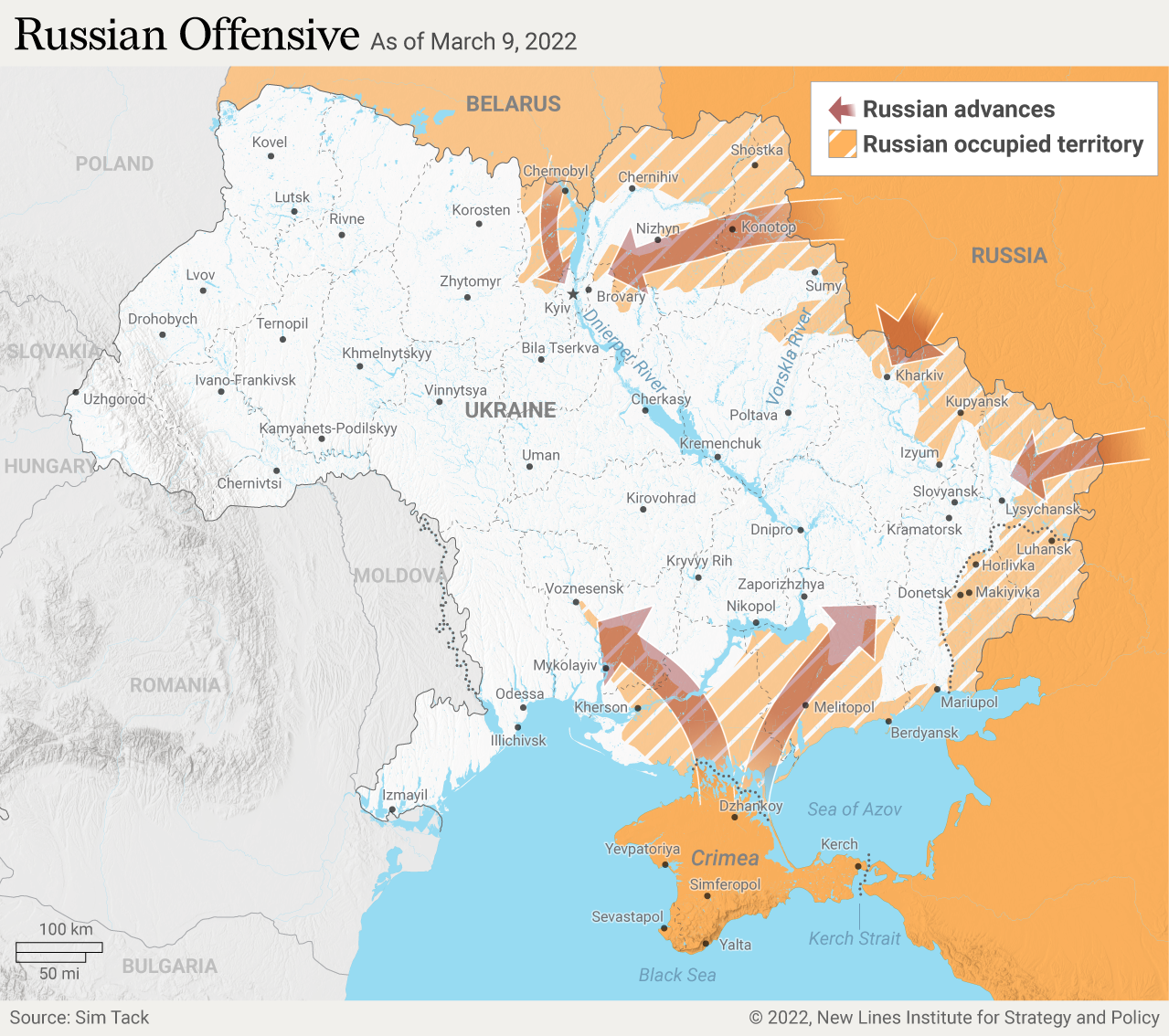
Such a position could be within reach for Russia: a position defined geographically by the Dnieper River, which intersects with Ukrainian territory and runs through Kyiv. If Russia were to nestle its forward military presence on the Dnieper, it would find itself in a highly defensible position. In current fighting, Ukrainian forces’ maneuvers oppose and constrain Russian military movements. While Ukraine is able to mount this level of resistance to slow Russia’s advance, its ability to mount meaningful counteroffensives from across the Dnieper would be extremely limited. Russia, on the other hand, may still be able to continue to push the fight onto the western banks of the river, continuing to expand the conflict or eroding Ukraine’s military strength but ultimately retaining the Dnieper, and the Eastern portion of Kyiv that straddles the river with it, as its ultimate fallback position.
Russia would effectively be able to claim some form of victory short of its original stated intent, despite the high military cost that went into it, and sustain pressure on Ukraine if it manages to gain a position on the river. Maintaining such a position would also allow Russia to permanently deny Ukraine access to its ports at the Sea of Azov and to guarantee the flow of fresh water to the Crimean Peninsula through the canal that feeds from the Dnieper. This victory would have far-reaching consequences not only for Ukraine but also for the broader security environment in Eastern Europe and any other theater where Russia sees its interests. A Russian success would lead the Kremlin to embolden its assertive foreign policy behavior and possibly even further military expansionism. This would guarantee a continuation of Russia as an international actor that is unable to behave itself according to the rule-based order.
On the other hand, if Russia can be kept from achieving this objective and if Ukraine can continue to resist the Russian military east of the Dnieper, a vastly different future emerges. On a military level, this would put Ukraine in a position to continue to erode the capacity of the Russian military and possibly even to force its retreat. Under such a scenario, the option of Ukrainian victory isn’t even restricted to the current conflict but could provide opportunity for the recovery of Ukraine’s territorial integrity to include the Donbas region and the Crimean Peninsula.
At a higher geopolitical level, a Russian inability to claim success in its military invasion of Ukraine would mean a significant blow to the perception of Russia’s conventional power. Such a blow would manifest in significant material losses that could set Russia’s military capacity-building efforts back several decades.
Holding on to the Eastern Bank of the Dnieper
Forcing a development on the battlefield that exploits the opportunity to negate Russia’s foreign policy objectives and erode its military capacity is easier said than done. The Russian offensive has managed to penetrate Ukraine along its entire shared border but in most places has not been able to advance deeply into Ukraine from there. Though Ukraine has mounted a strong defensive effort against the Russian offensive thus far, there are significant threats to its ability to retain an active military defensive effort on the eastern banks of the Dnieper River.
The most significant threat arises from the joining of fronts as Russia advances deeper into Ukraine. In the Luhansk region around Severodonetsk, as well as in the Donetsk region at Mariupol, advancing Russian forces have managed to meet up with separatist forces along the line of contact that defined the Russian-supported separatist territories in eastern Ukraine. The combination of these fronts poses a significant threat to Ukraine’s defensive position that had until now been largely configured around hardened static positions facing the separatist republics. As a result, the Ukrainian military has abandoned portions of these defensive positions in favor of new defensive positions to hold back further advances by Russian forces.
As this happens, however, these new defensive lines will face the combined strength of advancing Russian troops and separatist fighters freed up from abandoned portions of the line of contact. For instance, in concrete terms, the siege of Mariupol forces the Ukrainian defensive effort back to the Zaporizhzhia-Donetsk line, where it will face both Russian forces marching north from Crimea and the separatist forces (and their Russian backers) freed up from the former Donetsk-Mariupol line. A similar development is occurring in the Luhansk region, where Ukrainian defensive efforts have already folded back to Severodonetsk but risk being pushed farther back toward Slovyansk and Kramatorsk. In and of itself, the reconfiguration of defensive efforts doesn’t necessarily place Russia at the Dnieper River, but it presents an incrementally growing pressure on Ukrainian defenders fighting to keep Russian soldiers from achieving that goal.
The main risk in this defensive reconfiguration is the potential progressive collapse of defensive lines. As new defensive positions come under the pressure of combined Russian offensive efforts, their sustainability becomes questionable. This could force additional withdrawals to the next defensive line. Ukraine’s physical and human geography offer a number of anchors for fallback defensive positions, such as along the rivers between Dnipro and Kharkiv, or beyond that the Vorskla River that passes by Poltava. Each time the defensive line is forced back, however, additional Russian capacity will be freed up to join this offensive effort as the fronts are caught up by this advance from the south. This is already assuming that no separate breakthroughs from the north will envelop Ukrainian forces to prevent their fighting withdrawal.
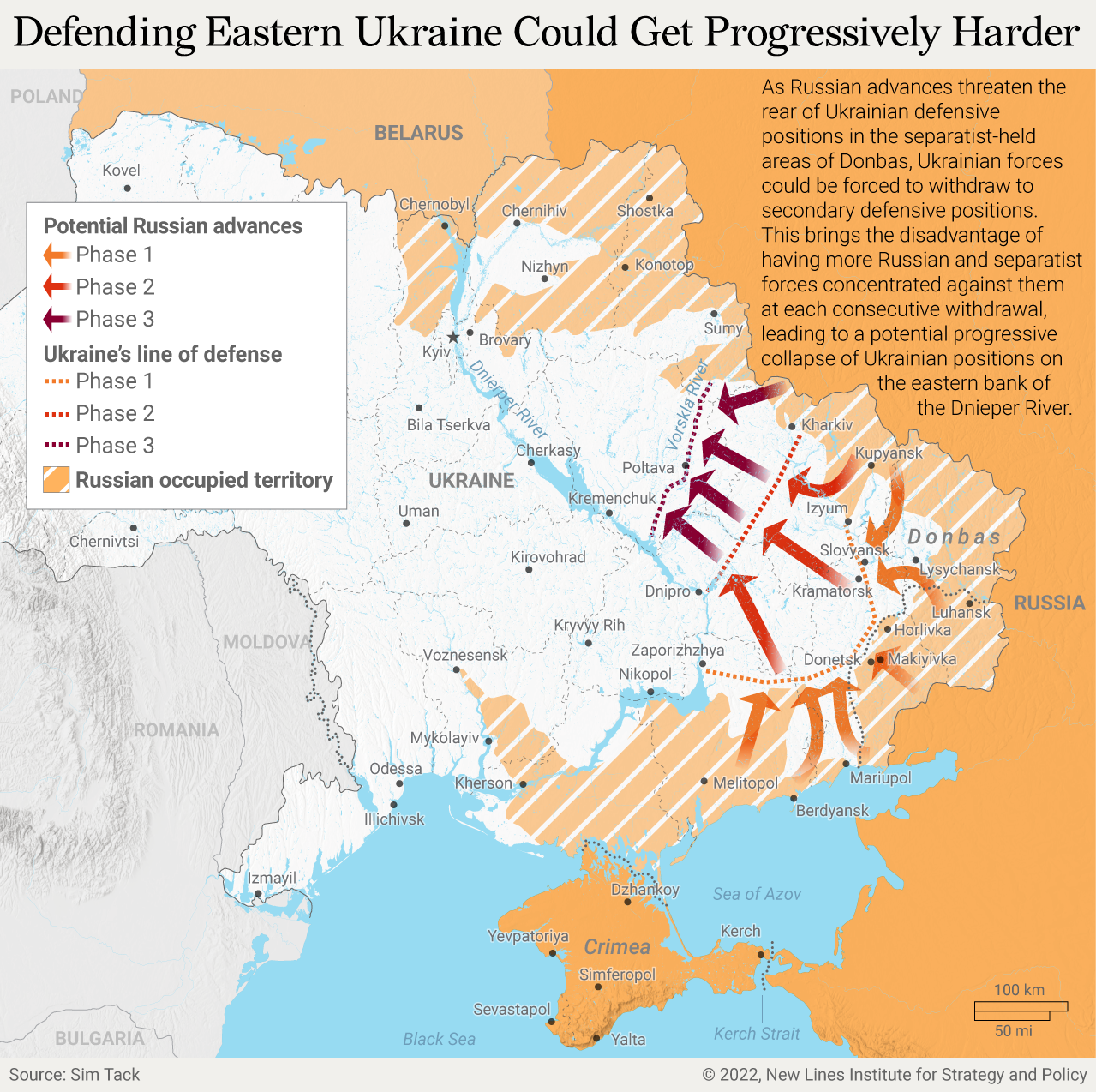
Tactical developments on the battlefield could also rapidly result in other threats to the Ukrainian defensive effort. This emphasizes the uncertain outcome of the battle on the eastern banks of the Dnieper River that will become the defining battle in shaping the entire geopolitical outcome of this conflict. From a U.S. or NATO perspective, Ukraine’s ability to retain a presence east of the Dnieper should be paramount.
Shaping the Battle from the Sidelines
The West has an intrinsic interest in ensuring a desirable outcome. The U.S. and its partners are constrained in affecting the outcome of this battle, however, and a balance must be struck between influencing the course of battle and avoiding dangerous escalation beyond it. The main emphasis of their approach has therefore been on providing material support to the Ukrainian military and on possibly supporting an insurgency in case of a Russian victory in Ukraine.
NATO has been hesitant to move toward direct involvement in the conflict in Ukraine; for example, the alliance rejected the proposal to mount a no-fly zone over Ukraine. This is not an imprudent posture, as any direct military involvement in Ukraine itself would risk spillover of the conventional conflict and, perhaps more importantly, a potential escalation toward nuclear conflict. Russia’s decision to put its nuclear forces on higher alert was a clear signal to the West, indicating that Russia is prepared to escalate further if the U.S. or its NATO allies were to become more directly involved.
There are many ways to influence the battle on the eastern banks of the Dnieper River without risking direct conventional or even nuclear engagement, however, and some efforts are already underway. Ukraine has received a significant amount of military support from the U.S. and its European allies in the form of small arms, body armor, anti-tank weapons, man-portable air defense systems (MANPADS), various types of ammunition, intelligence support, and of course raw financial support. But in order for Ukraine to feasibly withstand the continued Russian offensive, more intensive support may be required.
Ukraine has managed very well to defend its urban population centers, and these operations have slowed down Russian advances significantly. Outside of the cities, Russian forces are able to roam more freely and circumvent Ukrainian defense “hard points” found at population centers . Russia’s logistical limitations and limited ability to bring its overwhelming air power into the fight have played out to Ukraine’s advantage as well. What the Ukrainian military lacks is a greater standoff capability, though it has several systems to help fill this rule, such as Tochka tactical ballistic missiles, a number of rocket artillery systems with significant range, and most importantly its burgeoning fleet of strike drones.
Some efforts are underway to increase Ukraine’s strike capabilities, with a possible fighter aircraft swap being set up between the United States, Poland, and Ukraine that could see Polish MiG aircraft provided to the Ukrainian Air Force in return for F-16 deliveries to Poland. But such schemes have been slow to set up and still require Ukraine to deal with the challenges of Russian air defense capabilities and missile strikes against its own air bases. A more immediate and less complex source of standoff capability could be found in the delivery of capable artillery rocket systems such as the U.S. high mobility artillery rocket system (HIMARS) or similar alternatives from other origins. Such systems would allow Ukraine to negate Russian forces’ freedom of movement outside of the defensible population centers and could prevent Russia from effectively massing forces for offensive action.
In combination with intelligence support and a growing surveillance/strike drone fleet, such a standoff capability would have tremendous effects and the potential to turn the battle in favor of the Ukrainian armed forces. Other types of military equipment could also greatly increase Ukraine’s defensive capabilities, such as night fighting equipment that could allow them to exploit the Russian forces’ limitations in that domain and more capable air defense systems to deny Russia the freedom to employ its air power.
It is also important to consider other means of support beyond the battlefield, to the Ukrainian society as a whole to enable the country to sustain combat operations. During the Soviet invasion of Afghanistan, Michael Vickers (who would later become U.S. Under Secretary of Defense for Intelligence) studied the types of support that would be required to keep the mujahideen engaged on the battlefield year-round. He argued that the U.S. would have to provide food and other consumables to free fighters from having to provide for their families by tending their fields. There are many parallels between the situation back then and what Ukraine is facing now, and the same of support would go a long way in enabling the mobilization of Ukraine’s populace in combating the Russian invasion. The Russian invasion of Ukraine has already been incredibly disruptive to the Ukrainian economy. Maritime trade routes and air transport have been entirely suspended due to the threat projected by Russia’s navy and air force, but even the ground transport sector is folding in on itself as Ukrainian men employed in this sector are occupied in the defense of their country and as fuel prices shoot up.
Additional support directed at sustaining trade logistics and economic activity in Ukraine would result indirectly in an increased ability to sustain capacity on the battlefield. Any reduction of logistical strain on the Ukrainian economy, whether through the delivery of fuel or even by directly allocating transport assets to Ukraine, translates directly into combat effectiveness. In the same sense, supporting or organizing medical evacuations of military personnel and civilians from Ukraine, or the establishment of field hospitals, will allow Ukraine to free up capacity that can be otherwise directed toward the battlefield.
Costs and Benefits
A scenario under which the U.S. or NATO members would take on an active combat role in support of Ukraine is unfathomable, and given the risk of nuclear escalation this is not something that is likely to change. Given what is at stake here, and the long-term foreign policy goals that could be met through an erosion of Russia’s military capabilities in Ukraine, all means of support short of direct engagement in combat should be fully exhausted.
Doing so would present many challenges because of the time-sensitive nature of mounting such an effort and because of the costs associated with it. These costs are limited, though, in the face of what the alternative might bring. A Russia that is successful in Ukraine will continue to project political, military, and economic threats deeper into Europe and beyond and will over time end up consuming greater amounts of resources than any level of support to Ukraine at this very moment could require. Through its rash actions in Ukraine, Russia has exposed its primary hard power instrument to failure, and this presents an opportunity to force a shift in Russia’s erratic foreign policy behavior that is unlikely to be granted again in the future.
Sim Tack is a geopolitical and military analyst at Force Analysis. His activities are centered around intelligence-driven approaches to the study of armed conflicts and military capabilities, as well as other resources of power that support foreign policy behavior. He tweets at @SimTack.
The views expressed in this article are those of the author and not an official policy or position of the New Lines Institute.

